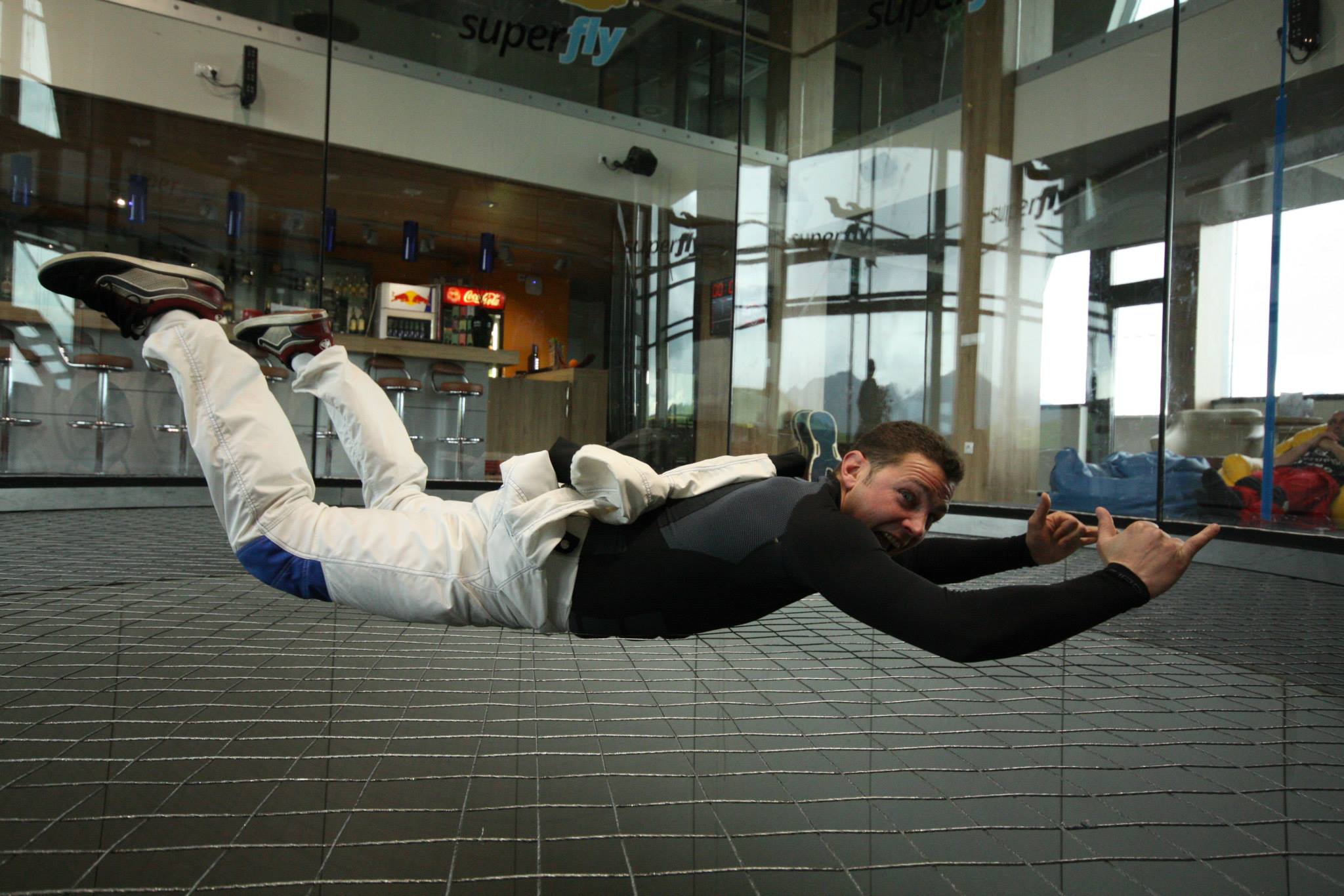Skydivers who have never seen the inside of a wind tunnel often ask themselves: why spend so much money on flying in a small glass tube if I can instead be outdoors in the big blue sky with my friends, freefall, fly my parachute, and have barbeque with my friends afterwards? Why pay to be constricted by the glass, in circulating air, with only my coach and maybe some tunnel camp participants to keep me company?
The answer is easy: if you really want to progress and learn to control and fly your body properly, then training in the wind tunnel is actually much better and pays off much more than if you only keep skydiving.
In a wind tunnel, air is being moved by big fans and circulates through a vertical glass column at speeds that can be manually adjusted. The speed of the wind that is created is so fast that humans of almost all sizes and ages can fly on it. Flying in the wind tunnel feels very similar to freefall. Thus, a wind tunnel is the perfect device to simulate the freefall part of a skydive.
When you fly in the windtunnel you will not have to think about gear checks, the exit from the plane, keeping altitude awareness, and pulling, landing, and packing the parachute. Also, while a skydive only lasts up to one minute at a time, in the tunnel you can definitely fly up to an hour a day. All you focus on, is how you fly your body in the air. This gives you a unique opportunity to practise and repeat moves over and over with the help of a trained instructor and concentrate only on your flying progression.
The progression in the wind tunnel is more or less the same as in the sky. However, most of the time, also dynamic moves are included in the training even at the beginning. This helps the student feel the air, understand how to fly their body, and have a steady learning curve. A new flyer will learn to bellyfly first, then backfly and how to move from belly to back in various ways. Backfly at first does not seem to be an important position in the eyes of a skydiver, but actually it is the basis for all other flying positions – and serves as a recovery position at high speeds. Dynamic moves such as carving facing in and out of the tunnel head up and head down are taught, and the student moves on to sitfly, layouts (transitioning from back to belly and backwards, over the head) and headdown. Once all these skills are acquired, the student learns to connect all the moves and positions and fly dynamically at any wind speed.

But can everything learned in the tunnel be seamlessly integrated into your skydiving? The short answer is yes. The longer answer is that flying in the tunnel is for sure more difficult than in the sky, because you need to use your body to get lift and actually take off the net. You have a closed small space while in the sky you have so much space it is sometimes hard to keep reference. If you can fly something in the tunnel, you should be able to fly it in the sky too, after a few training jumps.
Unfortunately, this does NOT work the other way round! If you can sitfly in the sky, it does not mean that you can automatically sitfly in the tunnel. You will need to go through the whole progression as any new tunnel flyer, before you can learn to sitfly. And chances are high, that you will need to “unlearn” lots of bad habits that you have acquired in the sky. They may work for you there, but they hinder you from efficient flying and perfect use of the air around you. This “unlearning” of bad habits definitely makes things hard for skydivers who wait long before they decide to go fly in the tunnel for the first time. They come to the tunnel with hundreds of jumps under their belt and are bitterly disappointed to realize that they have to start almost from zero and that on top of that their sky skills are often making it harder to learn things properly. Thus we can not stress enough the importance of learning things FIRST in the tunnel and THEN in the sky. It will save you lots and lots of money, tunnel hours, and frustration.
When you first look at the prices per hour of wind tunnel time, the statement that tunnel flying is cheaper does not make sense. In Europe you pay between 400 and 700 Euro per hour, and that does not even include the coaching fee. How can this be cheaper than skydiving? But if you look at the amount of freefall time you get per jump (not more than 50-60 seconds), it does add up! Let’s say you freefall for one minute and you pay 30 Euros per jump. For one hour of freefall you already pay 1800 Euro! For this amount you can definitely fly two to three coached hours in the tunnel, depending on which tunnel you choose. This is of course only a rough calculation, but you get the idea.
All in all it can be said: windtunnel coaching pays off! Yes it is expensive, but if you calculate the freefall time, it is cheaper than skydiving. And it is very beneficial for your skills, and for learning to fly your body efficiently and correctly in all dimensions.
In order to get the maximum out of every jump, boosting your abilities in the wind tunnel is the best thing you can do for yourself.

